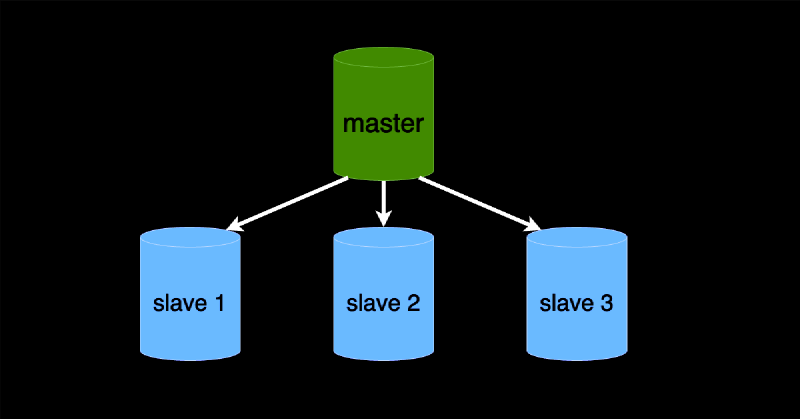Introduction
In this article, we will create a MySQL slave replica. A MySQL slave is a read-only copy of the master database. Using MySQL replication, the slave database is kept in sync with the master database.
The steps we will follow are:
- Spin up MySQL master and slave databases
- Create a user for replication
- Obtain master binary log coordinates
- Configure slave and start replication
What is database replication?
Database replication is a process that allows data from one database server (the master) to be copied to one or more database servers (the slaves or replicas). Replication is asynchronous, meaning that the slave does not need to be connected to the master constantly. The replica can catch up with the master when it is available.
Database replicas are used for:
- Scaling read operations
- High availability
- Disaster recovery
MySQL implements replication using the binary log. The master server writes changes to the binary log, and the slave server reads the binary log and applies the changes to its database.
Create MySQL master and slave databases
We will use Docker to create the MySQL master and slave databases. We will use the official MySQL Docker image. The master database will run on port 3308, and the slave database will run on port 3309.
We run docker compose up using the following docker-compose.yml file:
Create a DB user for replication
Replication in MySQL requires a user with the REPLICATION SLAVE privilege. We will create a user named replicator with the password rotacilper.
Connect to the master database using the MySQL client:
mysql --host 127.0.0.1 --port 3308 -uroot -ptoor
Create the replicator user and grant the REPLICATION SLAVE privilege:
CREATE USER 'replicator'@'%' IDENTIFIED BY 'rotacilper';
GRANT REPLICATION SLAVE ON *.* TO 'replicator'@'%';
FLUSH PRIVILEGES;
Retrieve master binary log coordinates
For the slave to start replication, it needs to know the master’s binary log file and position. We can obtain this information using the MySQL client which we opened in the previous step.
SHOW MASTER STATUS;
The output will look like this:
+------------+----------+--------------+------------------+-------------------+
| File | Position | Binlog_Do_DB | Binlog_Ignore_DB | Executed_Gtid_Set |
+------------+----------+--------------+------------------+-------------------+
| bin.000003 | 861 | | | |
+------------+----------+--------------+------------------+-------------------+
1 row in set (0.01 sec)
We must remember the File and Position values for the next step.
Configure slave and start replication
Now, we will connect to the slave database and configure it to replicate from the master database.
mysql --host 127.0.0.1 --port 3309 -uroot -ptoor
Use the CHANGE MASTER TO command to configure the slave to replicate from the master. Replace MASTER_LOG_FILE and MASTER_LOG_POS with the values obtained in the previous step.
CHANGE MASTER TO
MASTER_HOST='mysql_master',
MASTER_PORT=3306,
MASTER_USER='replicator',
MASTER_PASSWORD='rotacilper',
MASTER_LOG_FILE='bin.000003',
MASTER_LOG_POS=861,
GET_MASTER_PUBLIC_KEY=1;
MASTER_HOST is the hostname of the master, which matches the docker service name. The GET_MASTER_PUBLIC_KEY option is needed for MySQL 8.0 caching_sha2_password authentication.
Finally, start the slave:
START SLAVE;
The slave will now start replicating data from the master database. You can check the replication status using the SHOW REPLICA STATUS\G command.
We can create a table with data on the master database and check if it is replicated to the slave database:
USE test;
CREATE TABLE users (id INT PRIMARY KEY, name VARCHAR(255));
INSERT INTO users VALUES (1, 'Alice');
Further reading on database scaling
- Recently, we wrote about database gotchas when scaling applications. One of the issues we summarized was optimizing a MySQL INSERT with subqueries.
- In the past, we encountered a memory issue with MySQL prepared statements when scaling applications.
Follow along with the MySQL master-slave replication on video
Note: If you want to comment on this article, please do so on the YouTube video.
